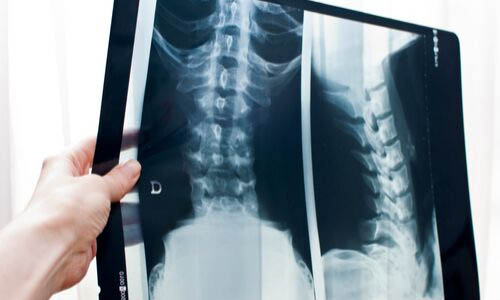Osteoporosis increases the risk of broken bones, most commonly the forearm, the hip or the vertebrae, but vertebral fractures are often mistaken for other chronic back pain conditions, leading to increased pain and the likelihood of further fractures, spinal deformity and an increased risk of hospitalisation.
Led by Dr Emma Clark, the University of Bristol team used a TRACK (Translational Acceleration and Knowledge Transfer) Award from the Elizabeth Blackwell Institute to fund a pilot study to look more closely at descriptions of back pain in women with and without vertebral fractures. They invited women over 50 who had a thoracic radiograph at Bristol hospitals within the past three months to participate – and 197 were recruited. The team used a Pain Questionnaire along with other questions regarding the site of the pain, pain intensity, basic demographics, osteoporosis risk factors and overall quality of life.
The preliminary results were intriguing, as Dr Clark explains: “Our analyses suggested that those women with vertebral fractures were slightly more likely to use certain descriptive words when characterising the pain, such as ‘crushing’. They also experienced pain for a shorter period of time compared to those with other causes of back pain, and they were more likely to report improvement of pain when lying down or with no movement, and that the pain didn’t spread to their legs.”
This data demonstrated for the first time that the back pain reported by women with vertebral fractures is different to that reported by women with back pain due to other causes. Because of this TRACK-funded work and other research Dr Clark has carried out, significant additional funding was obtained from Versus Arthritis to produce a quick clinical tool combining questions and a simple physical examination called Vfrac. Vfrac will be used by healthcare professionals when an older women presents to her GP practice with back pain to help identify if she is at high risk of having a vertebral fracture and so needs a spinal X-ray.
Dr Clark explains: “The earlier the diagnosis of vertebral fractures, and the earlier the clinical interventions, the better the prognosis for the patient. We are now conducting further investigations, and this will lead to a new clinical tool called Vfrac. We will then be able to test Vfrac in a clinical setting, and if successful this will change the management of back pain in older women across the UK and beyond.”
